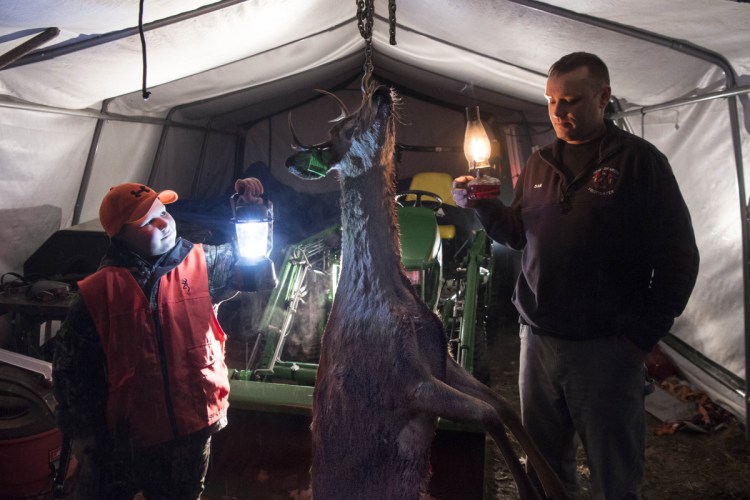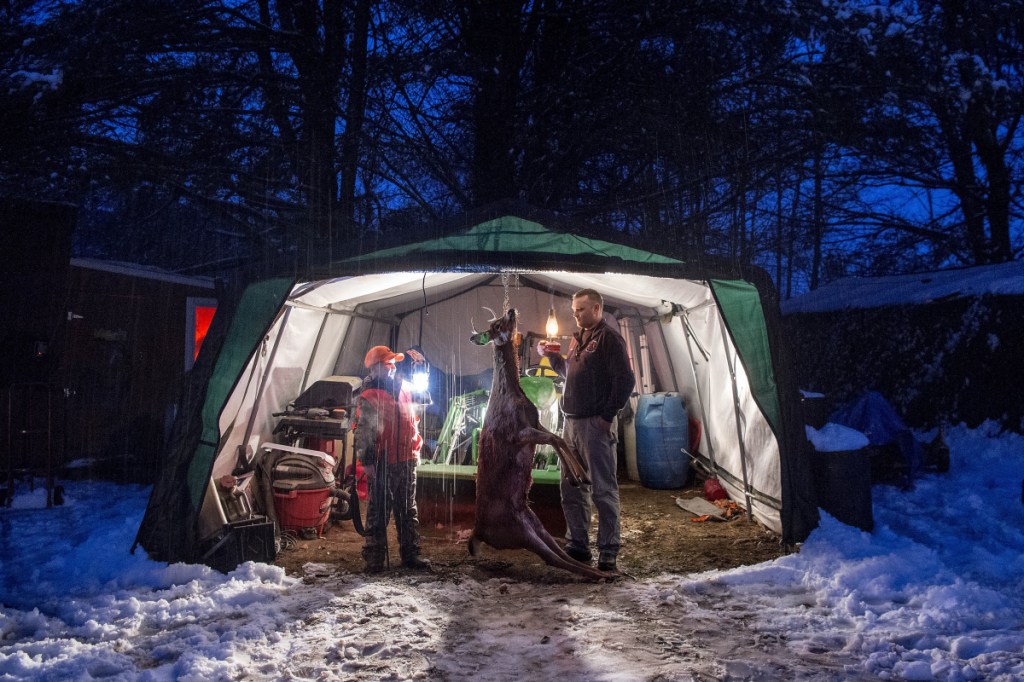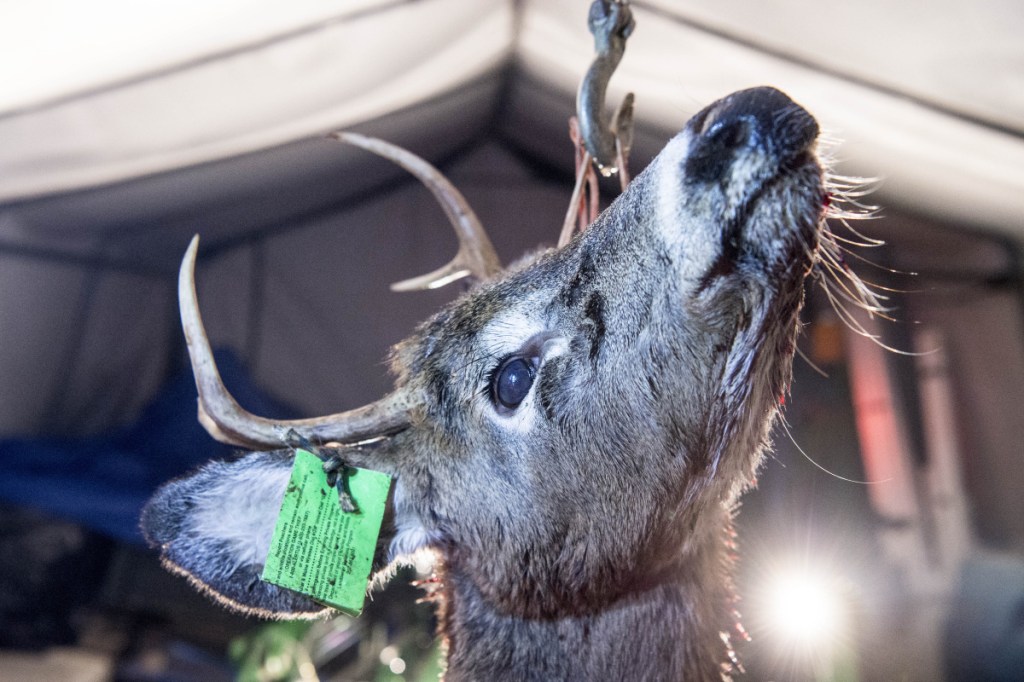A doe isn’t known for having antlers, but that’s just what a 9-year-old New Sharon boy bagged Monday. His rare deer had a four-point rack.
Chase Foss was making his way to his father’s truck when he saw what appeared to be a buck run about 6 feet in front of him. The two were hunting in Solon, in Somerset County.
Chase’s father, Daniel Foss, said Chase already had fired twice that day with no luck.
“I was walking back, and it (the deer) came out, so I shot it in the neck. Then it ran into a tree,” the elder Foss said.
Then the animal “came down across the clearing and came out into the road in front of my son and I,” Foss said. Chase, who carries an any-deer permit, took his shot and got the deer.
When Daniel Foss and his brother-in-law went to field dress the deer, they realized it was a doe.
“It’s pretty amazing. … It’s a one-in-a-lifetime deer. It was phenomenal to know he had caught something so rare and hard to come by,” Daniel Foss said.
When father and son took the deer to be tagged at nearby Baits, Bolts and Bullets, the animal was tagged as a doe, and then the town got in on the excitement. A picture of the unusual animal was posted on Baits, Bolts and Bullets’ Facebook page and shared 349 times.
Mark Latti, spokesman for the Maine Department of Fish and Game, said that while a doe with antlers is certainly a peculiarity, the state sees one or two a year.
Hunters killed about 27,000 deer in Maine in 2017.
“It is noteworthy. it is unusual. We don’t get that many, but we see a few each year,” he said.
Latti said testosterone imbalances in female deer can cause them to grow antlers. In most cases the result appears as small bumps, not full-sized racks, however.
Chase, a hunter of few words, is proud of bagging the animal, as is his father.
“It’s pretty amazing,” said Daniel Foss. “I’m a pretty proud daddy.”
“It felt really good,” Chase said.
According to Chase’s mother, Cristi Foss, the family plans to drop the head at a taxidermist Thursday to have it mounted. A wildlife biologist from the Department of Inland Fisheries & Wildlife will meet the family there to take samples of the animal’s teeth and glands for research.
Send questions/comments to the editors.





Comments are no longer available on this story